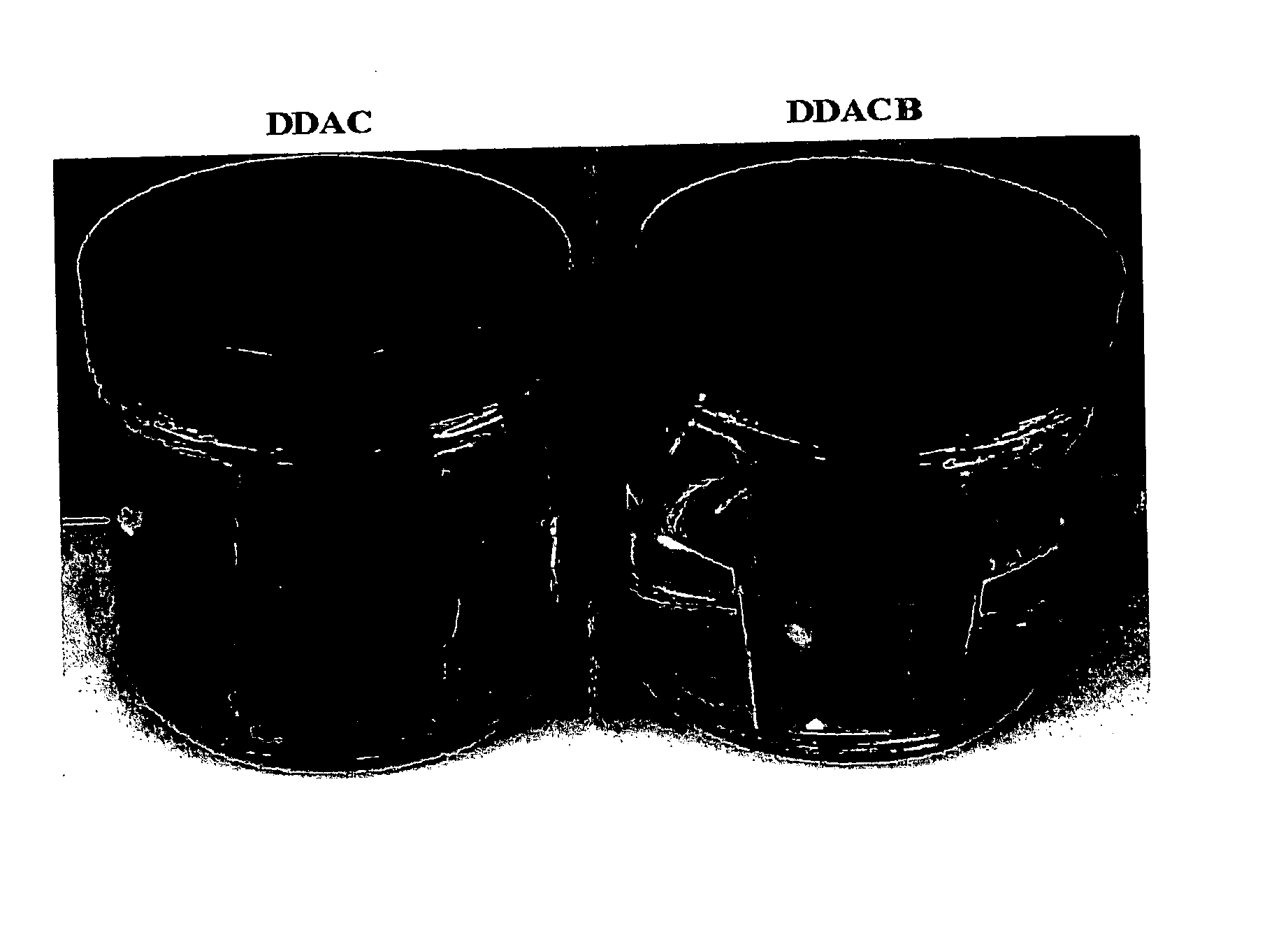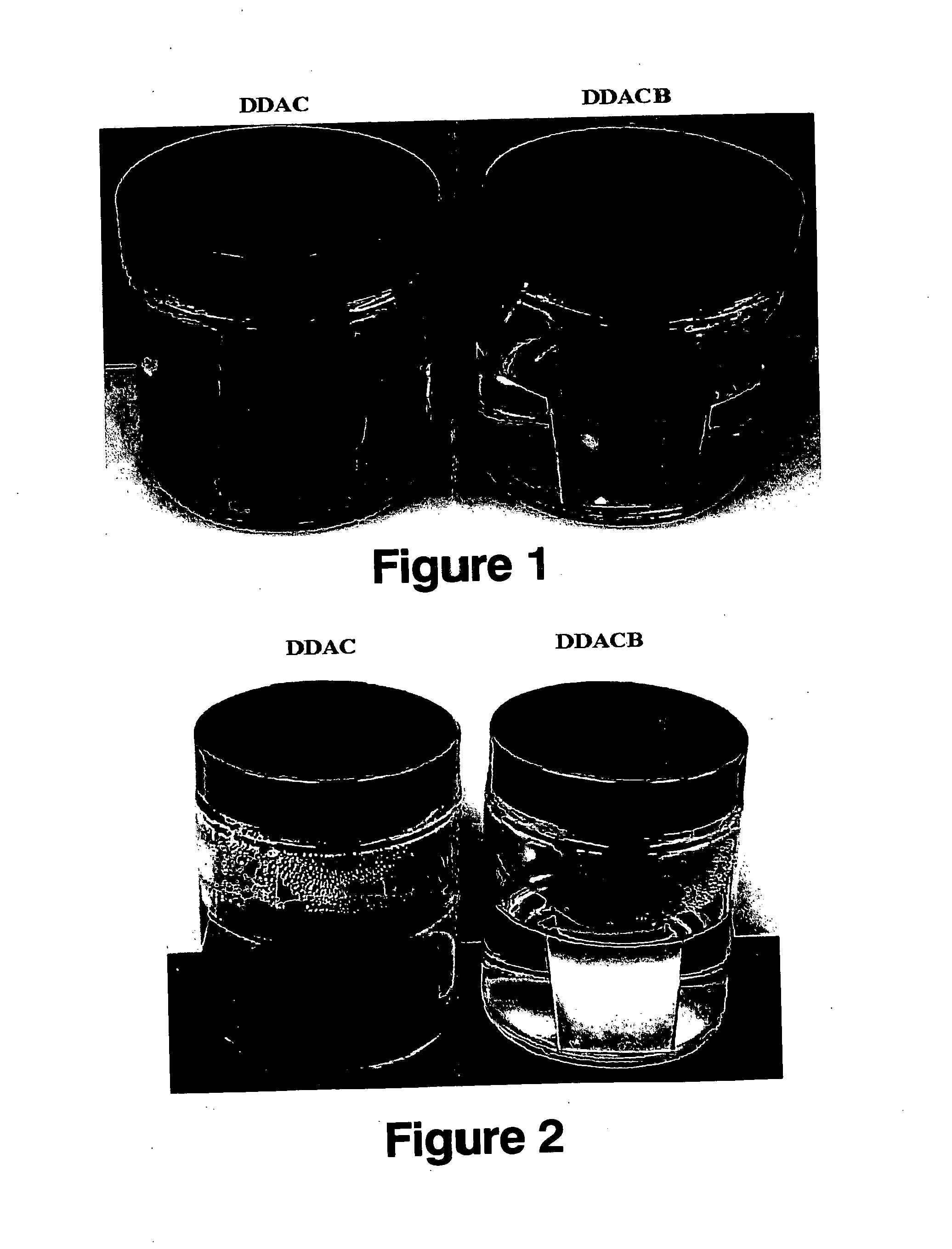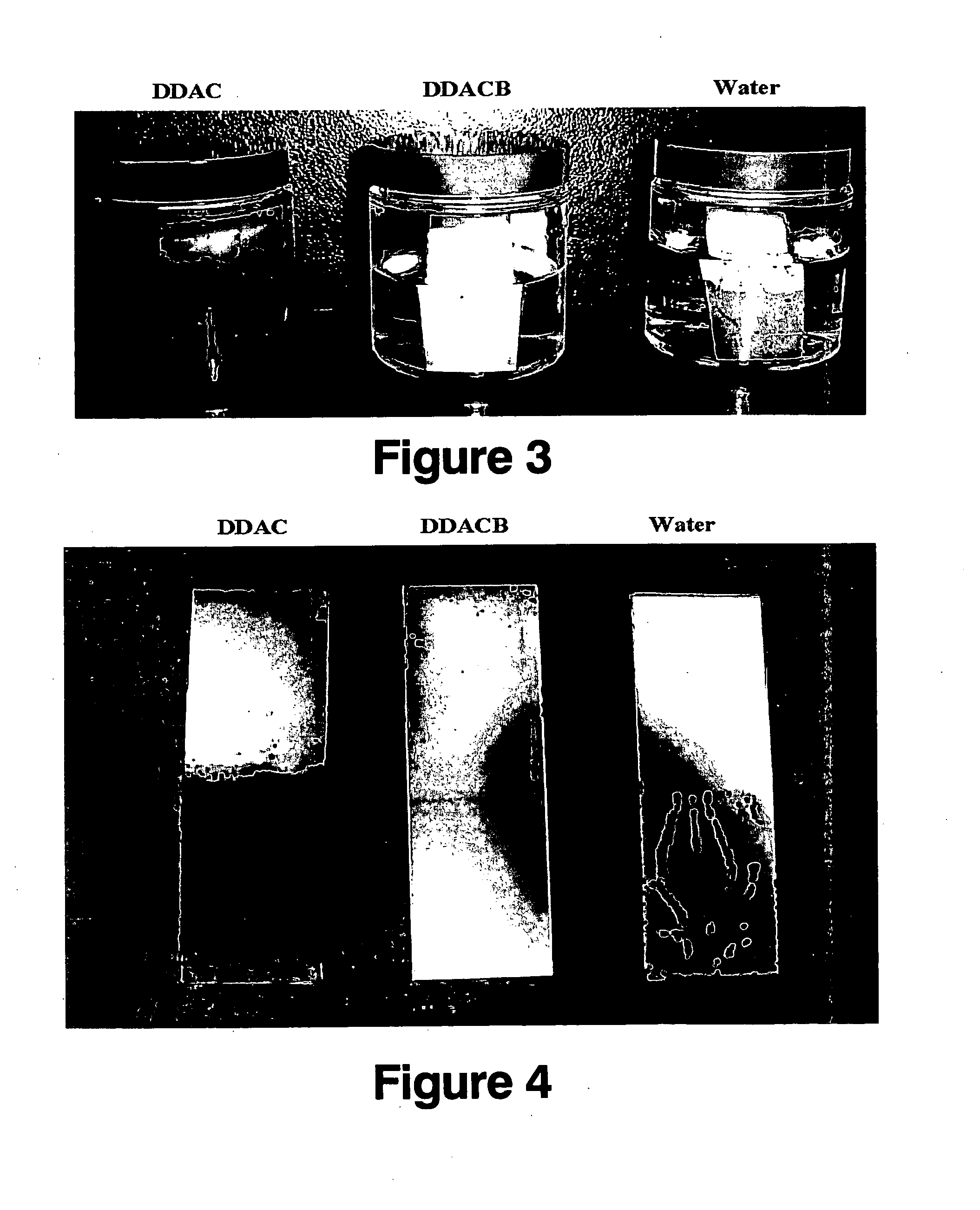Quaternary ammonium carbonates and bicarbonates as anticorrosive agents
- Summary
- Abstract
- Description
- Claims
- Application Information
AI Technical Summary
Benefits of technology
Problems solved by technology
Method used
Image
Examples
example 1
The object of this experiment was to test the removal of greasy soil with engine cleaner formulations. A mixture of 7.5 g vegetable oil (Crisco™ oil, The J. M. Smucker Co, Orville, Ohio) and 0.1 g carbon black was heated until liquefied. 0.5 g of the heated mixture was spread onto a metal coupon (steel coupon of 0.032″×1″×3″ dimensions available from Q-Panel Lab Products, Cleveland Ohio) and allowed to dry. The metal coupon was then partially submerged in 50 ml of a formulation containing morpholine or didecyldimethyl ammonium carbonate / bicarbonate (DDACB), as detailed in Table 1 below. After 1 hour, the metal coupon was removed from the formulation, and rinsed with water. A visual assessment was performed as to how much of the greasy soil was removed from the submerged portion of the metal coupon. The results are set forth in Table 1.
As shown in Table 1, replacement of morpholine by didecyldimethyl ammonium carbonate in the microemulsion results in significant improvement in bot...
example 2
Cold rolled steel coupons (steel coupons of 0.032″×1″×3″ dimensions (Q-Panel Lab Products, Cleveland Ohio)) were fully exposed to either deionized water or tap water, and to either deionized water containing 100 or 1000 ppm of didecyldimethyl ammonium carbonate / bicarbonate (DDACB) mixture or tap water containing 100 or 1000 ppm of didecyldimethyl ammonium carbonate / bicarbonate mixture for one week. The coupons were then removed, rinsed with either deionized or tap water and brushed lightly with a soft nylon brush. The coupons were then dried under a stream of nitrogen and weighed. The results are set forth in Table 2 below. Differences in weight are expressed as (−) for weight loss, or (+) for weight gain.
TABLE 2Wt (g)Wt (g)Wt.Sample#pH(before)(after)changeDI water18.612.624812.6193−0.044DI water + 100 ppm29.112.616112.6112−0.039DDACBDI water + 1000 ppm38.312.587012.6873+0.002DDACBTap water47.112.680712.6735−0.057Tap water + 100 ppm57.212.703412.6969−0.0051DDACBTap water + 1000 p...
example 3
Deionized water (58.2% w / w), surfactant (octyl dimethyl amine oxide (40% active), FMB-A08®, Lonza, Inc., Fair Lawn, N.J.) (8.0% w / w) and a 50% aqueous solution of a quaternary compound (didecyldimethyl ammonium chloride (DDAC), or didecyldimethyl ammonium carbonate / bicarbonate mixture (DDACB)) (33.8% w / w) were mixed together.
A 1:256 dilution of the mixture (660 ppm active quaternary ammonium compound) in water was used to assess the corrosion inhibition properties of DDAC and DDACB. Cold rolled steel plates (steel coupons of 0.032″×1″×3″ dimensions (Q-Panel Lab Products, Cleveland Ohio)) were immersed in each of the aqueous solutions and monitored, at room temperature, for a period of nine months.
FIGS. 1 and 2 are pictures of the plates after standing at room temperature in the aqueous solutions for 90 minutes and 30 days, respectively. As can be seen, the plate in the DDAC solution has started to corrode, after only 90 minutes, and is badly corroded after 30 days. In contrast, ...
PUM
| Property | Measurement | Unit |
|---|---|---|
| Corrosion properties | aaaaa | aaaaa |
Abstract
Description
Claims
Application Information
 Login to View More
Login to View More - R&D
- Intellectual Property
- Life Sciences
- Materials
- Tech Scout
- Unparalleled Data Quality
- Higher Quality Content
- 60% Fewer Hallucinations
Browse by: Latest US Patents, China's latest patents, Technical Efficacy Thesaurus, Application Domain, Technology Topic, Popular Technical Reports.
© 2025 PatSnap. All rights reserved.Legal|Privacy policy|Modern Slavery Act Transparency Statement|Sitemap|About US| Contact US: help@patsnap.com



